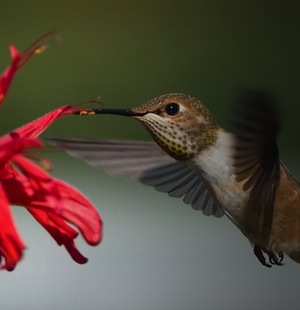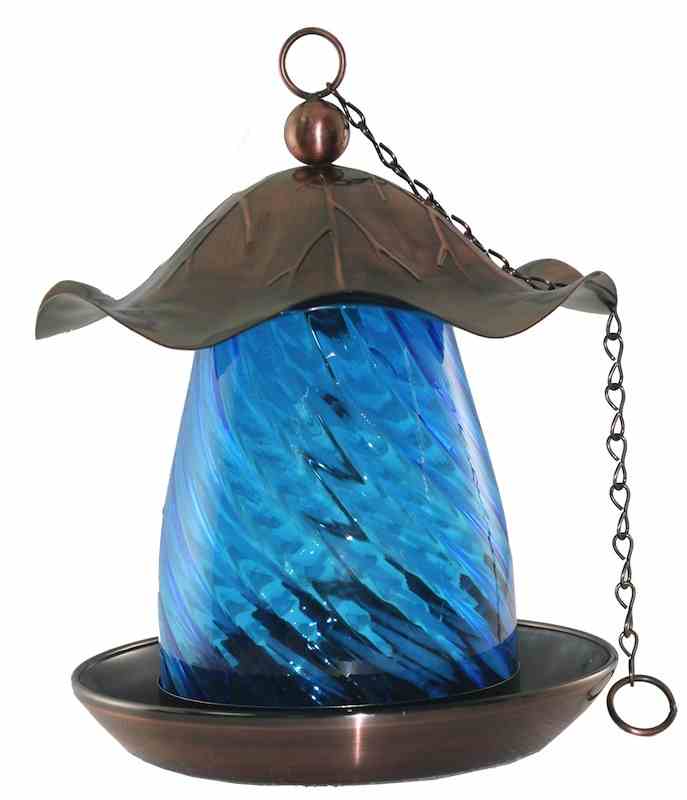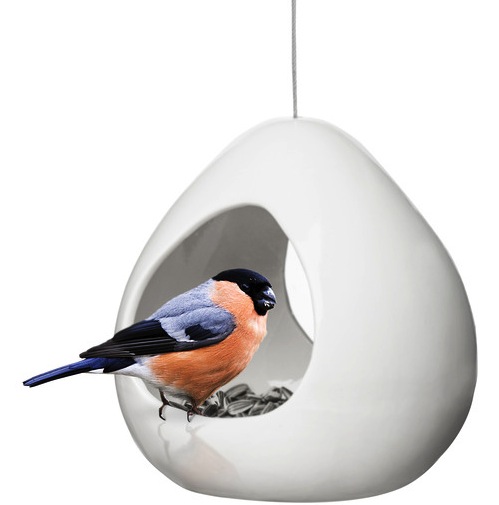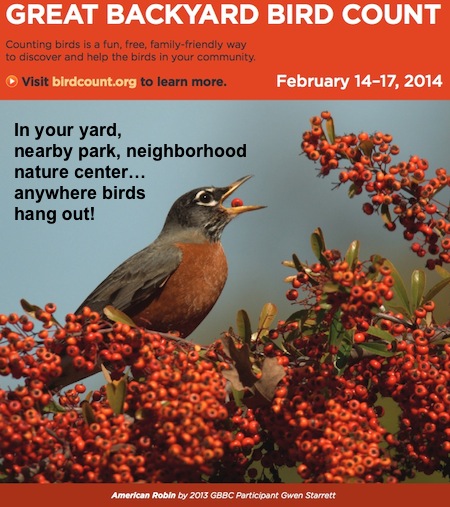-
Bird Brain Hummingbird Feeders for Citizen Science
Audubon Invites Volunteers to Help Track Hummingbirds This Spring
Take your hummingbird feeders a step further by helping Audubon track the tiny sprites this season. All habitats and feeders are welcome; from the old bird brain hummingbird feeders to honeysuckle and trumpet vine to colorful annuals providing food…. watch near fountains too, another favorite of this flying jewel!
NEW YORK, NY (April 1, 2014) – With spring officially upon us, the National Audubon Society invites birders and nature enthusiasts across the country to help track the health of hummingbird populations with Audubon’s Hummingbirds at Home app. This citizen science project utilizes the power of volunteers to compile data at a scale that scientists could never accomplish alone.
Every spring, numerous hummingbirds migrate long distances and must eat several times their weight in nectar daily to stay alive. Hummingbirds visit our yards every year, looking for nectar from our gardens and feeders. As flowers bloom earlier because of warming temperatures, the impact on hummingbirds which rely on nectar could be significant. The degree to which hummingbirds are able to adapt to accommodate these changes is not completely understood. Hummingbirds at Home was designed to bolster current research by collecting data from volunteers across the country that offers important insight on the effects of climate change and the birds’ well-being.
“Increasingly people are seeing the impact of climate change in their own backyards, from early blossoms to extreme weather,” said Dr. Gary Langham, Chief Scientist at Audubon. “This is a fun, family-friendly citizen science project that works in the classroom or in the kitchen.”
Hummingbirds at Home differs from other bird monitoring programs in that the focus is on recording the species, nectar sources, and feeding behavior observed. In the case of bloom timing mismatches, Audubon hopes to eventually learn if alternate nectar sources, like feeders, make a difference in hummingbird breeding success and survival.
Participants can get involved by spending a few minutes as frequently as they wish to collect invaluable data from feeding areas in their gardens and communities. Audubon’s Hummingbird at Home app makes it fun and easy. There is no cost to participate and using the free mobile app or website makes it simple to report sightings and learn more about these remarkable birds. For more information visit, www.hummingbirdsathome.org.
About Audubon
The National Audubon Society saves birds and their habitats throughout the Americas using science, advocacy, education and on-the-ground conservation. Audubon’s state programs, nature centers, chapters and partners have an unparalleled wingspan that reaches millions of people each year to inform, inspire and unite diverse communities in conservation action. Since 1905, Audubon’s vision has been a world in which people and wildlife thrive. Audubon is a nonprofit conservation organization. Learn more at www.audubon.org and @audubonsociety.
-
What’s Your Count? Here’ Ours-Sans the New Glass Bird Feeder
We counted on Monday, the last day for the 2014 Great backyard Bird Count. Had the event been last week-during the ice storm, more species would’ve been recorded. A warm sunny day saw a bit less activity at feeders than the first half of February when treacherous weather brought a slew of new visitors to this North Georgia yard. But with this warmer weather and the first glimpse of spring… a new glass bird feeder or two always helps to celebrate!
Stationary, the count was limited to the backyard where most of our feeders and baths are placed. Superior habitat occurs with mature pines, shrubs and hardwoods. By the way, the greatest benefit to glass feeders is the non-porous surface. Bacteria and mold can not penetrate surfaces like wood, this makes them healthier for birds. Plus they’re much easier to clean.
But back to the count: Again this year, participation increased over last with 131 countries reporting checklists, as opposed to 110 last year. Although data is still being entered, here’s a brief overview of country, number of species reported, and the number of checklists for that country. Pretty impressive!
United States 643 112,281
Canada 234 12,340
India 806 3,195
Australia 492 854
Mexico 658 451
Costa Rica 554 165
United Kingdom 155 150
Puerto Rico 113 150
Portugal 177 134
Honduras 335 104Here’s our list for a 30 minute count: 22 species… not too shabby 🙂
- Mourning Dove 4
- Red Bellied Woodpecker 1
- Downy Woodpecker 1
- Hairy Woodpecker 1
- Eastern Phoebe 1
- Blue Jay 2
- Carolina Chickadee 3
- Tufted Titmice 6
- White-breasted Nuthatch 2
- Brown-headed Nuthatch 1
- Carolina Wren 2
- Eastern Bluebird 2
- Chipping Sparrows 9
- Cardinal 6
- Robin 3
- American Goldfinch 11
- Eastern Towhee 2
- White-throated Sparrow 1
- Pine Warbler 8
- Yellow-rumped Warbler 2
- European Starlings 2
- American Crow 3
Cornell’s data won’t be complete until the end of the month, but they’ve listed some noticeable trends:
Fewer Finches
After last year’s “superflight,” this year’s GBBC reports for 10 irruptive species (mostly finches) are down considerably. This includes reports for the White-winged and Red crossbills, Common and Hoary redpolls, Pine and Evening grosbeaks, Pine Siskin, Purple Finch, Red-breasted Nuthatches, and Bohemian Waxwings. These are believed to be natural fluctuations in numbers because of variation in seed crops.Snowy Owl Invasion Continues
A massive irruption of Snowy Owls into the northeastern, mid-Atlantic, and Great Lakes States of the U.S., as well as southeastern Canada, is easily seen in GBBC numbers. Preliminary results show participants reported more than 2,500 Snowy Owls in 25 states and 7 provinces of the U.S. and Canada!The Polar Vortex Effect
The frigid cold in many parts of North America has resulted in unusual movements of waterfowl and grebes. With the Great Lakes almost completely frozen, some species, such as the White-winged Scoter and the Long-tailed Duck, have fled the frozen lakes and stopped at inland locations where they are not usually found at this time of year.You can still count birds!
Project FeederWatch is a winter-long survey of birds at your feeders. The lab is offering a 2-for-1 to join this fun project now.You can always count birds!
Anytime, anywhere in the world you can report bird sightings through eBird. Use the same user name and password you used for the GBBC and keep on counting at eBird.org.
The Cornell Lab of Ornithology is a nonprofit membership institution interpreting and conserving the earth’s biological diversity through research, education, and citizen science focused on birds. Visit the Cornell Lab website at www.birds.cornell.eduAudubon is dedicated to protecting birds and other wildlife and the habitat that supports them. Our national network of community-based nature centers and chapters, scientific and educational programs, and advocacy on behalf of areas sustaining important bird populations, engage millions of people of all ages and backgrounds in conservation. www.audubon.org
Bird Studies Canada administers regional, national, and international research and monitoring programs that advance the understanding, appreciation, and conservation of wild birds and their habitats. We are Canada’s national body for bird conservation and science, and we are a non-governmental charitable organization. www.birdscanada.org
-
GBBC 2014: Get Ready-Get Set-Count… Just 15 Minutes – this weekend!
The 17th Annual Great Backyard Bird Count wants you!
For just 15 minutes on any day from February 14th-17thIt’s open to everyone, regardless of experience, a fantastic science project for grades K-12 too. Do it this year… for the birds, for science, and for fun!
Folks from more than 100 countries are expected to participate in this year’s Bird Count. Anyone can count birds for at least 15 minutes on one or more of the specified days and enter their sightings at www.BirdCount.org. The information gathered by tens of thousands of volunteers helps track the health of bird populations at a scale that would not otherwise be possible. The GBBC is a joint project of the Cornell Lab of Ornithology and the National Audubon Society with partner Bird Studies Canada. Great for educators and class projects; kindergarten thru high school, it gets kids outside and involved with the nature! We’ll be posting results online via links to The Cornell Lab once the count has ended!Last year’s Great Backyard Bird Count shattered records after going global for the first time. Participants reported their bird sightings from all 7 continents, including 111 countries and independent territories. More than 34.5 million birds and 3,610 species were recorded – nearly one-third of the world’s total bird species documented in just four days.
It’s easy to get started… just a few simple steps
A more in-depth video from The Cornell Lab explains how to take part, why participation is needed, and what we can learn from the count.
It’s actually bigger than you think, and you really do matter!





